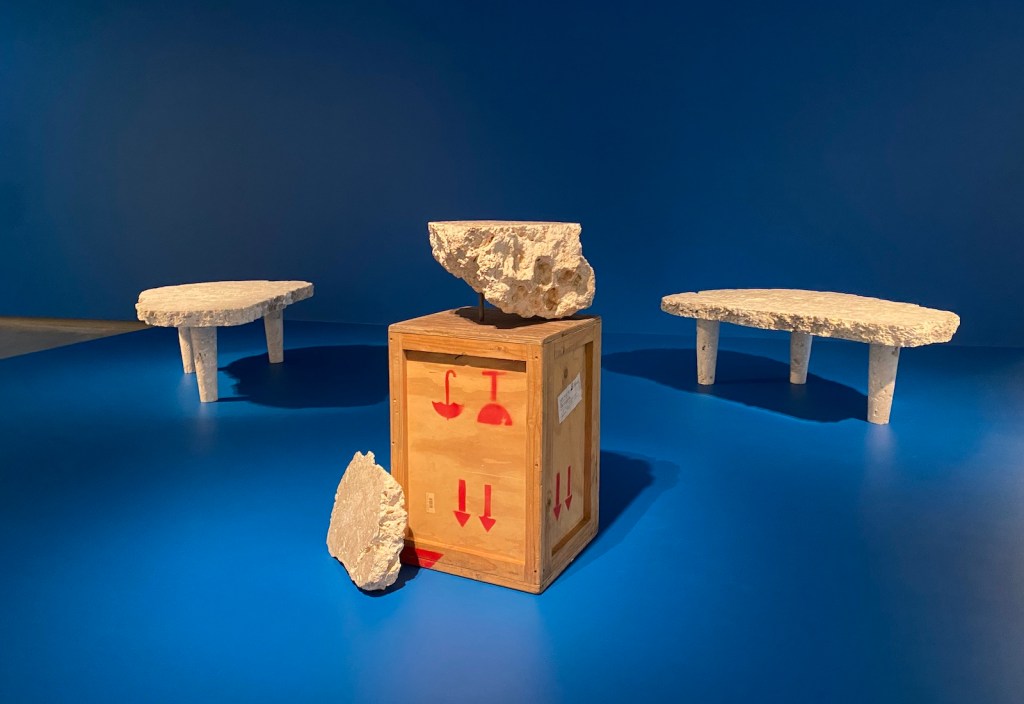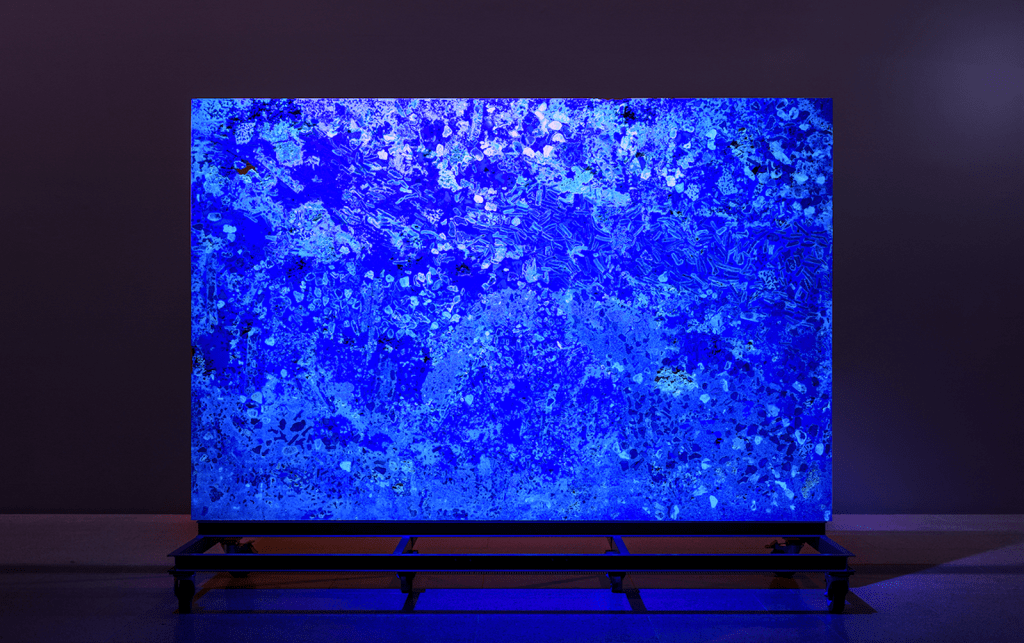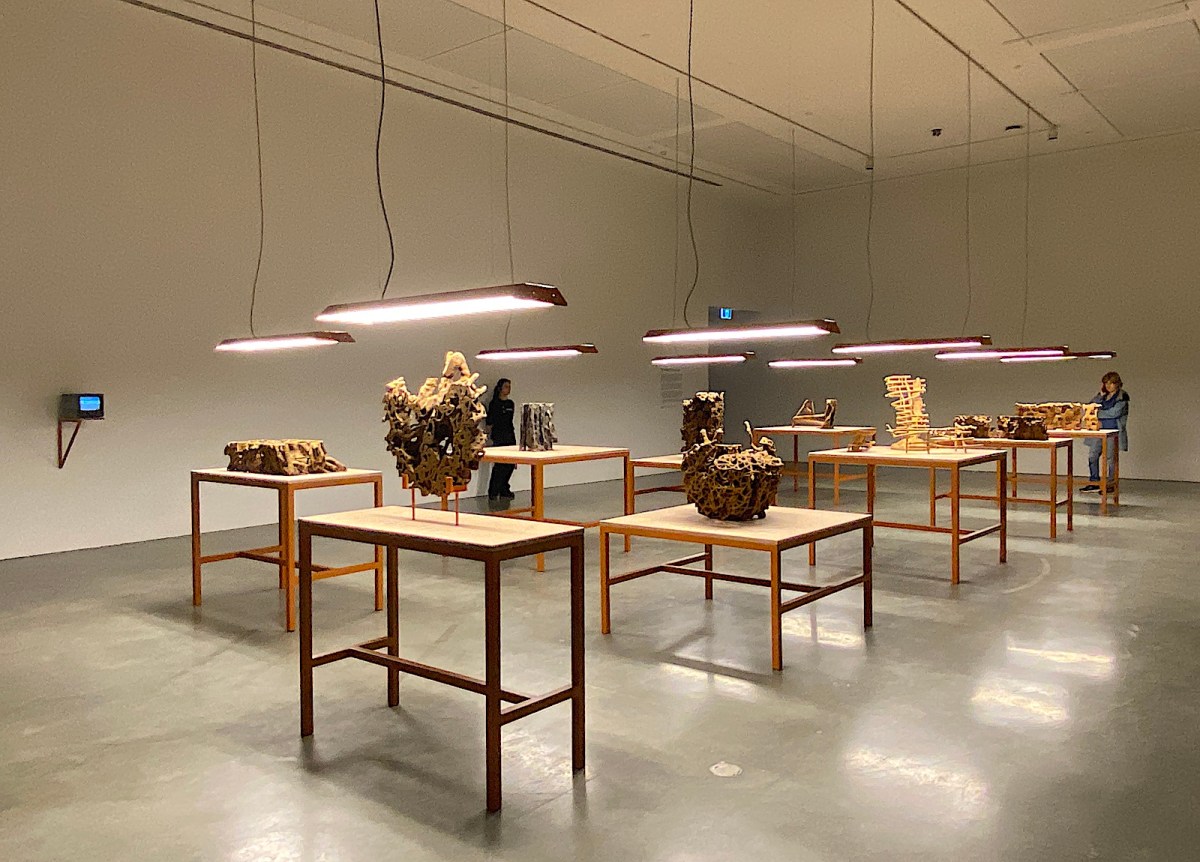The Museum of Contemporary Art Australia (MCA) has had a long commitment to present the work of living Australian artists. Its latest exhibition is one such show, delving into Naarm/Melbourne artist Nicholas Mangan‘s past two decades of work, which seemingly defy the boundaries of sculpture and time.
Mangan is an artist we all should know; in recent years he’s shown in the Shanghai Biennale (2023), KW Institute for Contemporary Art in Berlin, Chisenhale Gallery in London, the Guangdong Times Museum in China, the iconic SculptureCenter and the New Museum Triennial (both in New York) and the Gwangju Biennale in Seoul, among other global major platforms for contemporary artists working today.
And the work in the MCA’s exhibition is testament to this success: it is thought-provoking, it is well-researched, it pushes the boundaries of materiality, it is meticulously delivered and it broadens the way we think about our engagement with the natural world.
Curators Anneke Jaspers and Anna Davis have fleshed out these touch points in the way they have designed the exhibition. Jaspers explains it is loosely divided into three pathways of thought: a cross axis of the first three rooms focuses on the physical properties of minerals in particular (carbon, limestone and zircon) and the geopolitics and deep time associated with those resources and their extraction.
Visitors first encounter Nauru – Notes from a Cretaceous World – a suite of sculptures made from Nauruan limestone upon a sea-like blue pedestal that connects them. Nauru has rich deposits of phosphate – a mineral formed over millennia by marine life and excrement from migrating birds – that was mined to a barren wasteland (when largely under Australian administration). The limestone references this history, and the table speaks to a wild money-making plot by a former Nauruan President to use the last remaining remnants of the mined landscape for a US consumer market.

This is the kind of depth to be found in all eight of Mangan’s installations in this exhibition – and it is both intriguing and alarming if viewers give them the time they deserve.
Continuing the journey through the exhibition, the long central axis, which runs the length of the level’s three galleries, there are clusters of works that continue to look at the means of production and the apparatus used.
For example, Ancient Lights (2015) is a large video installation powered by solar cells, which have been installed on the MCA’s roof. You can see the battery installed alongside the video.
In the next gallery is the expanded sculptural work, Limits to Growth (2016–21), which considers two types of currency – Bitcoin and the Rai, an ancient currency from the Pacific Island of Yap. One is hugely cumbersome and the other largely invisible.
Mangan has accumulated Bitcoin in order to fund the production of the earliest elements of this work.
What can be seen across this thread of installation is the way Mangan uses materials with a kind of democratic zeal – from coconut husks and coral rubble to rare minerals and harvested solar energy.
Completing the exhibition, the two main gallery spaces are handed over to multi-component installations Termite Economies (2018-2020) and Core-Coralations (2021-ongoing). The first pairs non-human labour (termites) with 3D printing and bitmap technologies, to riff off an early 2000s report by the CSIRO (Commonwealth Scientific and Industrial Research Organisation) that suggested the behaviour of termites could be harnessed for economic gain to pinpoint gold and rare metal extraction.
The work comprises a series of nine exquisitely formed sculptures that sit atop tables and are lit from above. Around the walls are four discrete video pieces, and a sound element completes the work. In a first, all three phases of this work’s development are shown.
And in the final space, Mangan’s epic work Core-Coralations (2021-ongoing), includes a newly commissioned sculpture, which is engaged with the mass bleaching events of the Great Barrier Reef. A standout work is the double-sided, free-standing sculpture Death Assemblage, which uses UV light to animate bioluminescent pigment embedded in the sculpture. It reads like a video, and moves between a sequence of stunning iridescence to a bleached “canvas” – in what Mangan describes as a kind of ‘warning beacon’.

Other elements comprise PVC tubing and Styrofoam boxes, all made from the same bleached coral material.
Curator Anna Davis says, ‘[Mangan] has described his work on some occasions as a kind of material storytelling,’ and this installation is a perfect example of that thinking. He allows us to experience materials in different ways, bringing sculpture into a filmic experience. It really is very clever making, and feels very dynamic.
Despite starting with Mangan’s earliest work from 2009, Nauru – Notes from a Cretaceous World, and ending with Core-Coralations (2021-ongoing), the exhibition has not been presented chronologically, and all the works are shown in new configurations, paying a nod to their evolving nature.
Read: Exhibition review: Tales of Land and Sea, Bundanon
Overall, this exhibition allows viewers to experience sculpture as something quite different, and uses material matter as triggers for contemplation of the violence of material extraction, to deep time and the forces of nature, to our own connection with the material world. It is a truly fabulous exhibition.
Two years in the planning, it is accompanied by a major publication, which has been co-published by Lenz Press, Milan (Italy), ensuring its international distribution.
Mangan first showed with the MCA in the 2005 Primavera exhibition.
Nicholas Mangan: A World Undone
5 April – 30 June
Museum of Contemporary Art Australia
George Street, Sydney (Level 3)
Curators: Anneke Jaspers and Anna Davis
Free.





